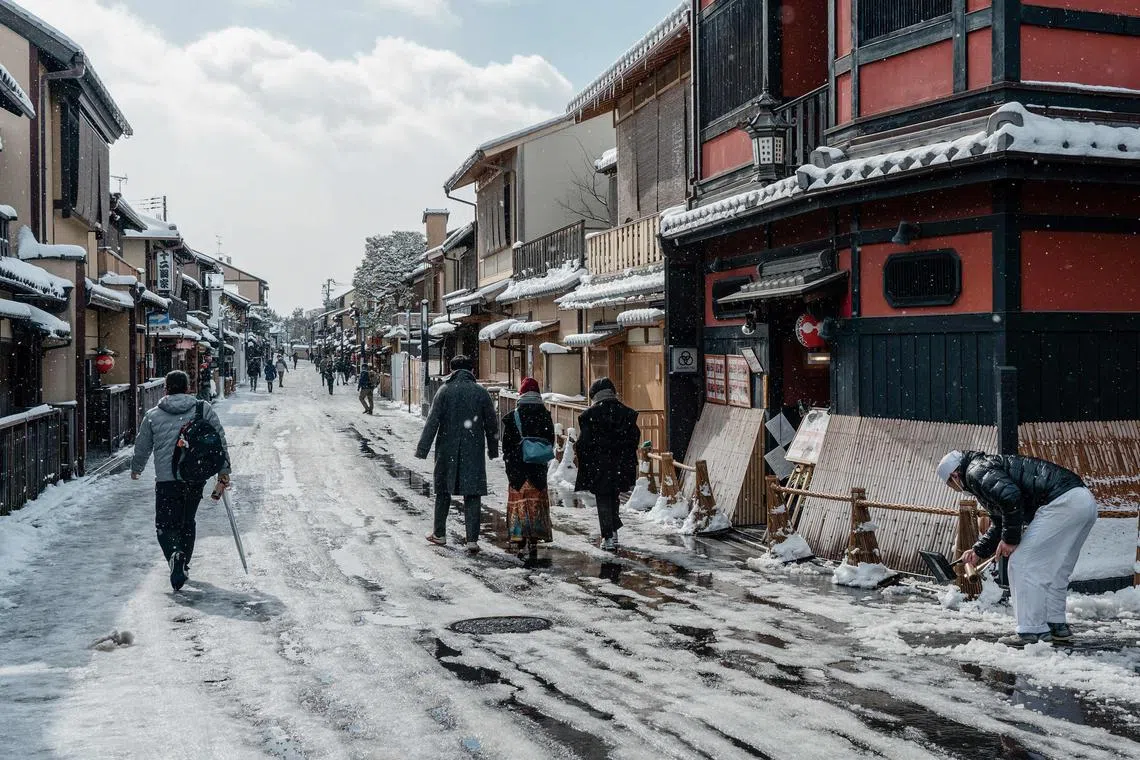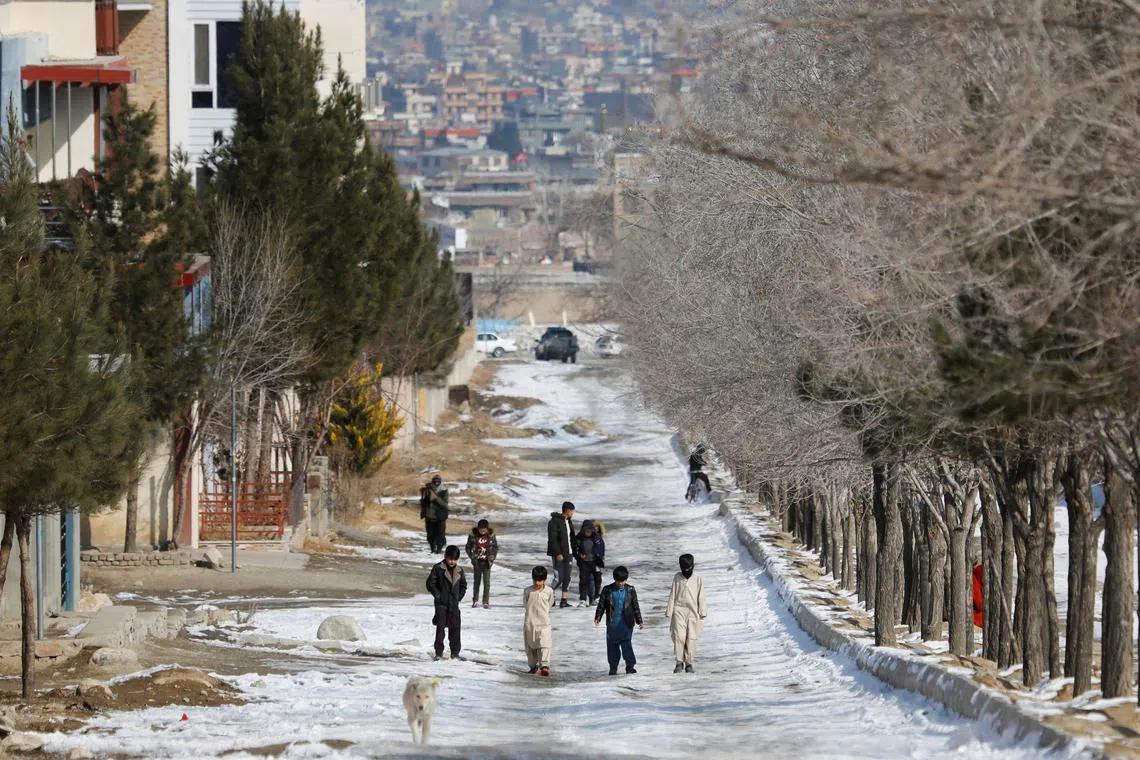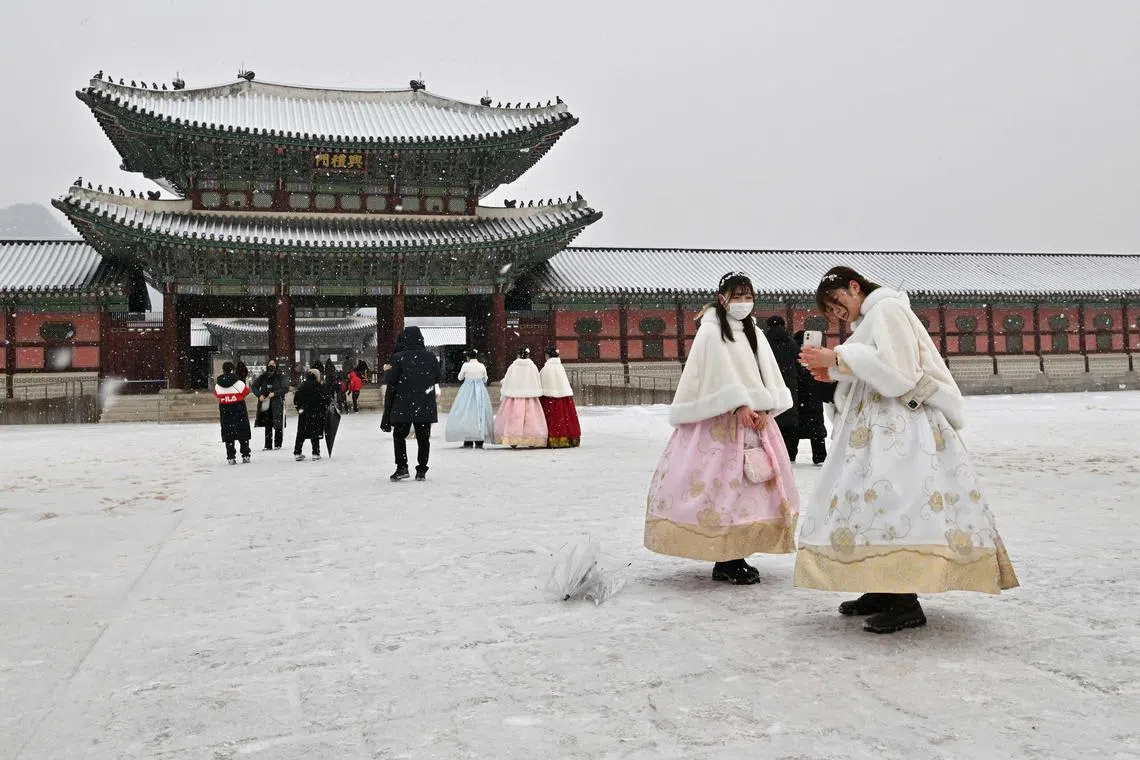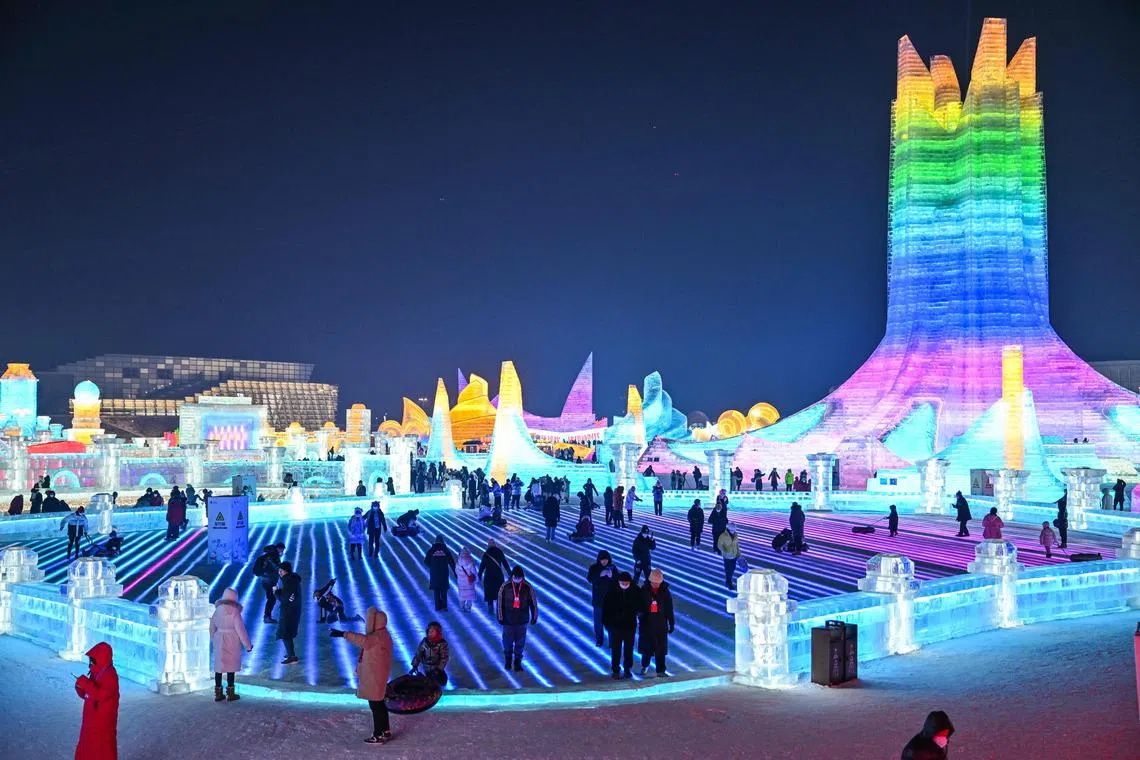Asia has had a really cold month, courtesy of the polar vortex
Sign up now: Get insights on Asia's fast-moving developments

Scientists say Asia’s extreme cold is largely the result of the so-called polar vortex.
PHOTO: AFP
Follow topic:
BEIJING - Mohe, China’s northernmost city, recorded a temperature of minus 53 deg C this week. That was the coldest in its recorded history and cold enough to cause hypothermia within minutes in anyone who wasn’t dressed properly.
“It has never been this cold,” Ms Zhang Hong, 53, who runs a pancake shop in Mohe and has lived in the city for 30 years, said by phone Friday.
“It was so frosty outside,” she added. “The wind was so brisk that it felt as though it was shaving your nose and face.”
As arctic winds and snow whipped across Siberia and into China, Japan and the Korean Peninsula
Noses and fingers turned red. Plane and train journeys were delayed or cancelled. And the extreme cold put a damper on the Lunar New Year, the most important holiday of the year for many people in the region.
South Asia is having a chilly winter, too. Several Indian states experienced “severe cold wave conditions” in mid-January, the government said. And in Afghanistan, where temperatures in some areas came close to minus 18.3 deg C, authorities say that at least 162 people have died from the cold since Jan 10.
Here’s what we know about the science and human impacts of Asia’s cold snap.
‘The rails of a roller coaster’
Scientists say Asia’s extreme cold is largely the result of the so-called polar vortex, the same weather phenomenon that brought exceptionally cold weather to the United States last month.
The polar vortex is held in place by the Earth’s rotation and temperature differences between the Arctic and midlatitudes. When those variations in temperatures grow, the polar vortex can shift south. This happens naturally, but scientists think that as the planet warms, shifts in the polar vortex are likely to become more frequent and pronounced.
Scientists aren’t sure what role, if any, climate change plays in the process, or whether the number of extreme freezes will increase as warming continues.
This month, the polar vortex brought arctic air to Central Asia before slowly moving eastward, said meteorologist Woo Jin-kyu of the Korea Meteorological Administration. Its southward bulge is accompanied by a shift in the jet stream, a ring of strong wind that blows from west to east along the vortex’s edges, he said.
“It looks like the rails of a roller coaster,” he said. “And the larger the amplitude of the rails, the larger the area of the polar vortex and the farther south the arctic air extends.”
There has been a general decrease in the frequency and intensity of cold extremes across much of the world since the 1950s, the Intergovernmental Panel on Climate Change noted in a report last year. But Mr Howden, the vice chair of an IPCC working group, said the trend is an average that doesn’t account for local variations.
“What’s actually happening in parts of the world is that we’re actually getting more cold weather and more extreme weather,” he said. “So hotter hot days and colder cold days.”
Cold from Kabul to Tokyo
Afghanistan has felt the cold snap
Afghanistan’s coldest winter in about a decade has come at a time when many nonprofits have suspended operations in the country because of a recent law that barred women from aid work, hampering a United Nations-led relief program.
“Six million people are close to famine” in Afghanistan, Mr Martin Griffiths, the UN’s top humanitarian chief, told CNN from Kabul this week. “So if this programme doesn’t function as it’s supposed to, we’re in very serious trouble.”

Afghanistan has felt the cold snap more acutely than any other country in Asia this month.
PHOTO: REUTERS
At least three deaths in Japan this week were also linked to cold weather, a Cabinet secretary told reporters on Wednesday. Heavy snow has suspended flights and high-speed trains.
“The snowfall was not so bad, but it got so cold, which was worse,” said Mr Toshiharu Yamano, 58, the manager of a spa in Fukui, a prefecture along Japan’s western coast. “A lot of people couldn’t get hot water because their water pipes suddenly froze.”
On the Korean Peninsula, North Korea’s state meteorological agency warned residents in the last week of “the most bitter cold wave in 23 years”. And in South Korea, hundreds of flights were grounded, and beaches were covered in ice. The local news media quoted ice fishermen who said they had cut an excursion short after their lines froze.

Visitors at the Gyeongbokgung Palace in Seoul during snowfall on Jan 26.
PHOTO: AFP
‘It’s too chilly’
China’s national weather agency issued daily warnings of extremely cold temperatures
Some tourists, eager to travel again following the lifting of the country’s stringent “zero-Covid” measures last month, were not deterred by the worst of the cold.
Earlier this week, crowds gathered for an ice festival in Harbin, a city that was partly founded by Russian railroad engineers and is known for its magnificent Russian architecture. Gawkers mobbed ice sculptures the size of houses, and there was an hours-long line for a Ferris wheel.

Visitors at the Harbin Ice and Snow World on Jan 5.
PHOTO: AFP
But in a country where the combination of cold temperatures and natural gas shortages has been making this winter unbearable for people in some northern provinces, the extreme cold was largely a downside to an otherwise festive Lunar New Year holiday week.
In downtown Beijing, the wind chill was minus 25 deg C by Monday night. Powerful winds howled around the city’s tall buildings through the night, before calm skies returned by midday Tuesday. Few people ventured outside.
Ms Zhang, the pancake shop owner in Mohe, also stayed home.
“People dare not go out,” she said. “It’s too chilly.” NYTIMES

